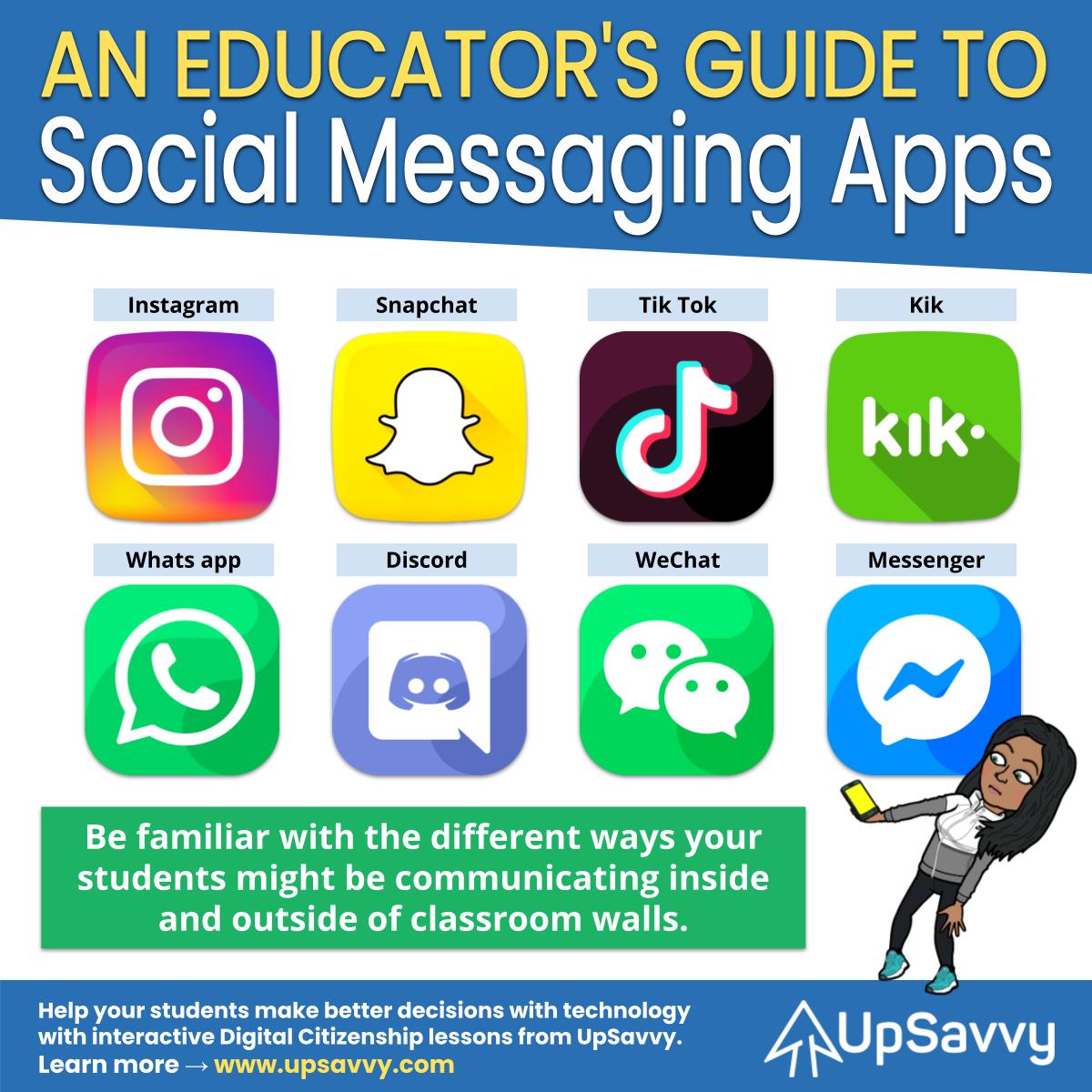
Social Messaging Apps are often the primary and preferred way students communicate with their peers and family members on a regular basis. The options for digital communications are vast and dynamic, the potential dangers are pertinent, and the personal responsibility and accountability components crucial. It is important to be aware and familiar with many of the most common social messaging apps students are utilizing to communicate inside and outside of the classroom walls so that teachers and families can better support students online.
Instagram is a free photo and video sharing app that focuses on content creation and engagement of users. Students using this app can communicate through stories, reels, content posts, direct messages, and comment threads. It can be extremely addictive to keep scrolling the stories of others and seeing what content is posted by friends, celebrity icons, and influencers.
Snapchat
Snapchat lets users exchange candid images, messages, and videos that are designed to disappear after they are viewed. Snapchat is also home to stories, snap streaks, filters, photo embellishments, and a map where you can see the physical location of your contacts. This social messaging app can quickly hide content that is being exchanged between users.
TikTok
TikTok is a video sharing app that has users creating short content videos in hopes of providing entertainment, sharing ideas, collecting followers, and potentially gathering digital momentum and quantifiable likes. This app also recommends videos for you based on your preferences and floods viewers with continuous content. There can be a tremendous amount of content exposure through Tik tok and trends that can quickly impact decision making and behaviors.
Kik
Kik can host group chats with up to forty nine other users, and can be used for sending text, videos, and gifs. Kik is also popular for being able to follow and chat with different brands in music, entertainment, but it is important to note that users can also have chats with anonymous users and those outside of their contacts.
Whatsapp is especially popular with friends in different countries as it allows you to text, call, and send images just with a wifi connection. It can be a great way to avoid data usage and easily connect with others around the world for free. Whatsapp is directly connected to a user’s mobile phone number and it can be possible to receive messages and calls from unknown numbers.
Discord
Discord is a free voice, video, and text app that allows users to communicate on any imaginable topic from video games, to school, to current events. Discord conversations should be constantly observed as real time communication with anonymous discord users can be difficult to control and manage.
WeChat allows its users to send text, emoji icons, and pictures in direct one-on-one conversations with others. This social messaging platform also has the capability to host a WeChat group with five hundred users and a group call with as many as nine people. WeChat is currently used by over a billion individuals around the world.
Messenger
Messenger is a spin off from the original Facebook Chat developed over ten years ago. It allows users to send direct messages, create group chats, send various forms of content, and call strictly with wifi or using data. It has great functionality between mobile and desktop, and can be an easy way to send messages between individuals, teams, organizations, and businesses.